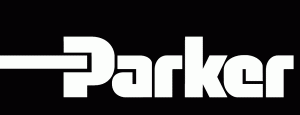by Lisa Eitel, Design World
 At a recent visit to the Parker Hannifin Electromechanical and Drives Division in Irwin, Pa., I got the chance to hear the perspective of Jeremy Miller, Product Manager — Linear Mechanics. I asked him about some of the major design objectives Parker’s customers cite when changing their designs from fluid power to electromechanical. Click here or scroll to the bottom of this post for an audio recording of the full interview with Miller.
At a recent visit to the Parker Hannifin Electromechanical and Drives Division in Irwin, Pa., I got the chance to hear the perspective of Jeremy Miller, Product Manager — Linear Mechanics. I asked him about some of the major design objectives Parker’s customers cite when changing their designs from fluid power to electromechanical. Click here or scroll to the bottom of this post for an audio recording of the full interview with Miller.
Here are some of the highlights of what Miller had to say about cost, controllability, efficiency, and long-term concerns about maintenance.
1. One challenge design engineers face today is to trim operating costs and overall energy usage. There’s a drive to reduce design carbon footprints (partly to satisfy government regulations) and that’s driven more interest over the past several years in switching from fluid power to electromechanical.
2. In addition to energy savings, electromechanical options make for machine builds with higher accuracy. In some applications, this makes for more material consistency than builds based on fluid power — which also tends to reduce scrap and waste.
3. Electromechanical alternatives to fluid-power setups often need far less frequent maintenance — and far less complex servicing when it is necessary.
Case in point: Many of Parker’s electromechanical actuators can run with minimal or even no maintenance. Parker’s ETH electric cylinder only needs occasional preventative maintenance in the form of lubrication … and the intervals between each servicing can be very long. What’s more, the actual process for lubrication can be done in seconds. Another example — the ETT tubular-motor actuator from the Parker Hannifin Electromechanical and Drives Division — has no moving bearing elements, so it’s essentially a maintenance-free design.
4. Many OEMs are moving to electromechanical solutions to eliminate safety concerns about overall system cleanliness. After all, electromechanical technology poses no risk of leaking hydraulic lines or high-pressure ruptures, which can be extremely dangerous. Parker is also seeing an uptick in concern about hydraulic-fluid leaks where they might contaminate environments and products — as in mobile equipment for agriculture, for example. Here, mitigation processes and the potential for litigation have the potential to be very costly. The combined influences of demand for efficiency, output-product consistency and quality, and simpler maintenance all affect total cost of ownership.
An increasing number of OEMs are specifying electromechanical offerings instead of fluid power — even in applications where the latter once dominated. That’s in part due to the drive towards greater system efficiency. “Pneumatic systems are as low as 10% efficient — maybe 10 to 20% efficient. Hydraulic systems might be 40% efficient. In contrast, electromechanical solutions deliver efficiencies upwards of 80 to 90% in some cases,” said Miller. “That translates into greatly improved total cost of ownership.”
The manufacturer helps design engineers calculate the impact of that efficiency. “We analyze the delta between the systems’ upfront cost when buying new capital equipment — because traditionally, electromechanical solutions are more expensive. Then we weigh that against overall energy savings derived from higher efficiency levels and specific electricity costs,” explained Miller. Accounting for other contributing factors such as maintenance, many designs can see an overall ROI for the additional upfront cost incurred within months.
“For example, we recently had an end user that changed out an entire line of pneumatic cylinders to all electromechanical cylinders. They eliminated one of their plant’s compressors to get an ROI on the upfront cost within six months,” Miller added.
Most design engineers rightly associate electromechanical motion with improved levels of control over fluid-power alternatives. “More precise and infinite positioning capability makes for less scrap, better reliability, and more consistent product with overall improved quality,” explained Miller. Consider how a packaging house might run a piece of forming equipment to press sheets into shaped end products.
“We can now hold that forming process to much tighter tolerances, and there’s less scrap thanks to more consistency … so that saves on bulk material,” said Miller.
Traditionally (because of the tolerances of forming) end users had to oversize parts. Now they can get much more precise about the actual material, thanks to the controllability that electromechanical actuators lend the process.
This article originally appeared on Linear Motion Tips, April 4, 2017.
